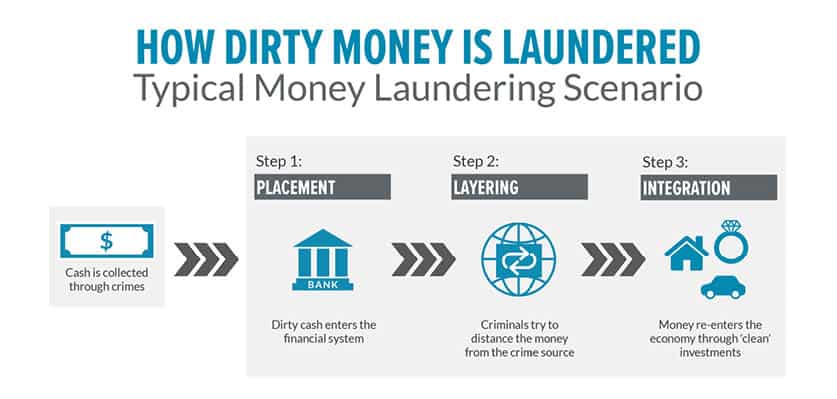In the enigmatic realm of foreign exchange, where currencies dance to the rhythm of global markets, lurks a sinister shadow – money laundering. This illicit practice, like a phantom, seeps into the forex ecosystem, tainting its once-pristine waters.

Image: alessa.com
As a vigilant guardian of financial integrity, we embark on a deep-dive exploration into the murky underworld of forex money laundering. Uncover its insidious methods, unravel its dire consequences, and equip yourself with the knowledge to safeguard your hard-earned wealth from its clutches.
The Many Faces of Forex Money Laundering
Like a chameleon, forex money laundering takes myriad forms, each designed to conceal illicit funds. Among the most prevalent are:
- Smurfing: Breaking down large sums into smaller, more manageable amounts to avoid detection.
- Layering: Transferring funds through multiple accounts and transactions to obscure their origin.
- Integration: Investing laundered funds in legitimate businesses to create an illusion of legitimacy.
These techniques, employed by cunning launderers, serve as a labyrinthine maze, making it challenging for regulators to track and seize ill-gotten gains.
The Perils of Forex Money Laundering
The corrosive effects of forex money laundering permeate far beyond financial institutions. It undermines the integrity of markets, threatens economic stability, and gives strength to criminal organizations.
When illegitimate funds infiltrate forex markets, they distort price action, creating an artificial demand that can lead to financial instability. Moreover, money laundering serves as a lifeline for criminal enterprises, allowing them to finance their illicit activities and evade detection.
Stemming the Tide of Money Laundering
Combating forex money laundering requires a multi-faceted approach, involving regulators, law enforcement agencies, and the financial industry itself. Implementing stringent anti-money laundering (AML) regulations, utilizing advanced monitoring systems, and fostering international cooperation are crucial steps toward curbing this illicit trade.
Additionally, financial institutions play a vital role as gatekeepers. Implementing robust KYC (Know Your Customer) procedures, conducting thorough transaction screening, and reporting suspicious activities are essential safeguards to deter and detect money laundering.

Image: morning-news-2457.blogspot.com
Empowering You to Stay Vigilant
As individuals, we too have a responsibility to combat forex money laundering. By being aware of the telltale signs and taking precautions, we can help create an impenetrable line of defense.
Here’s how you can protect yourself:
- Be wary of unsolicited investment opportunities: Legitimate forex brokers will never cold-call or pressure you into investing.
- Research thoroughly before committing: Investigate the reputation and legitimacy of any forex broker you consider trading with.
- Never share sensitive financial information: Keep account details, passwords, and other sensitive data confidential.
By embracing these simple yet effective measures, we can collectively contribute to the eradication of forex money laundering.
Frequently Asked Questions
- Q: How can I report suspected money laundering?
- A: Report suspicious activities to your financial institution or national regulatory authority.
- Q: What are the penalties for money laundering?
- A: Penalties vary depending on jurisdiction but typically involve heavy fines and imprisonment.
- Q: Is it illegal to trade forex with a broker who is not regulated?
- A: Yes, trading with an unregulated broker carries significant risks, including the potential for money laundering.
Types Of Money Laundering In Forex
A Call to Action
The fight against forex money laundering is an ongoing battle. By understanding its intricacies, embracing precautions, and collaborating with regulators and financial institutions, we can create a world where illicit funds have nowhere to hide. Are you ready to join the movement for financial integrity?






